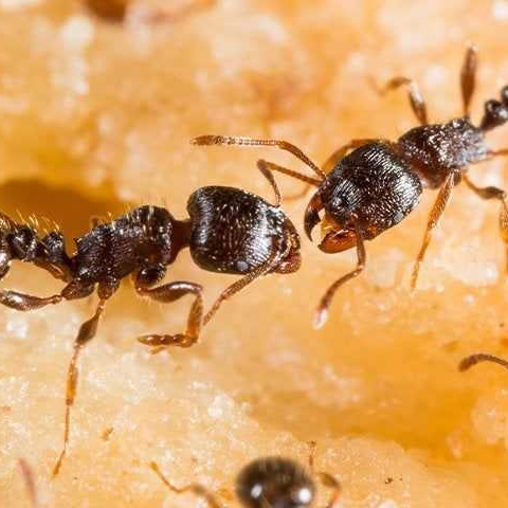
Five Easy Ant Control Tips
When we say easy, we don't mean that these tips for controlling ants are easy to do. There is nothing easy about ant control—well, unless you hire someone to do it for you. When we say easy, we mean easy to understand. Ant control can be super complicated. Today, we're going to break things down into a simple and easy-to-understand methodology for effective ant control in Los Angeles County. Here's how it works.
The Process
Before we get to the specific tips, it is important to quickly break down the process. These tips counter the behavior patterns of ants to naturally exclude them from your home. If you're willing to take the time to implement these tips, ants won't be the only pests you'll keep out of your Los Angeles County home.
Tip 1: Remove Attractants
If you have a lot of ants in your yard, and a lot of ants exploring the exterior of your home, you can expect to have problems with ants indoors. Consider these possible ant attractants:
- Rotting organic matter - Some ants are attracted to the strong odor of rotting human food, pet food, and plant matter. A high level of sanitation around your home can make a big difference when it comes to deterring ants.
- Honeydew - A common, and highly sought-after food source for ants is the excretion of aphids, whiteflies, and other plant-damaging insects. If you have healthy plants in your landscaping, those plants will be resistant to these insects.
- Insects - Ants eat insects both dead and alive. The more insects you have, the more interesting your exterior will be to ants. One great way to reduce insect activity is to replace exterior white lights with yellow lights. This spectrum of light is less of an attractant.
- Debris - If you have leaf piles, stacks of dead branches, grass clippings, scrap wood, campfire wood, or some other organic debris in your yard, ants will be strongly attracted to them. Stay on top of yard work and move woodpiles away from your exterior.
- Moisture - Ants will be drawn to the perimeter around your home if it is damp. Moisture problems can also attract the bugs that ants eat. Clean clogs from your gutter system and make sure everything is in good working condition. Trim bushes and shrubs and remove unnecessary plants from your landscaping.
Tip 2: Apply Exclusion Methods
It is difficult to keep an ant that is only 1/16 of an inch long from getting into your home. But that doesn't mean you shouldn't try. Here are a few common locations ants exploit:
- Make sure your door sweeps and weatherstripping make good contact all the way around your exterior doors.
- Replace any damaged window or door screens and seal any gaps between your screen frames and your window and door frames.
- Use a caulking gun to seal gaps around pipes and wire conduits.
- Use a foundation repair kit to seal cracks in your foundation walls.
- Use a caulking gun to fill in cracks, gaps, and holes in rotting wood.
- Trim plants away from your exterior walls.
Tip 3: Make Your Home Less Interesting To Ants
Do you know that, when ants get into your home and find food, they recruit other ants to come into your home? This can cause some ant species to create nests inside your wall, floor, and ceiling voids.
- Keep your home as clean as possible.
- Deep clean around appliances.
- Clean up juice spills immediately.
- Store your pantry foods in sealed containers.
- Make sure no fruit is left to rot in a trash bin in your home.
- Address leaky faucets, showerheads, and other plumbing issues.
Tip 4: Removal
If ants manage to get into your home in large numbers, it is essential to diagnose the problem and take appropriate action.
- Try to track where the ants are coming from. You may be able to seal gaps on the interior or exterior of your home to stop the entry.
- Use a vacuum to suck the ants up and dispose of the bag outside.
- Clean the area where you found the ants. This removes the pheromone scent that will draw other ants into your home.
Tip 5: Bait
Once you've applied natural methods to resist ant activity and exclude them from your home, there may be occasions where you'll need to apply ant control treatments around your home or in your yard. This can be complicated as you can spend a lot of money on baits that the particular ant you're dealing with is not interested in feeding on. They can also become bait averse when the bait is applied wrong.
If you need assistance, remember that HomeShield Pest Control is available to help. If you live in Los Angeles County, you're in our service area. Connect with us and tell us about your ant control problem. We can guide you in finding a one-time solution or ongoing Los Angeles County pest control services, depending on your needs.

Our California Pest Control Services
In California, We Provide Reliable Home Pest Control And Commercial Pest Control Solutions.
Why Our Customers Love Us
HomeShield Pest Control received an average rating of 5.0 out of 5 stars from over 8000+ reviews.
-
Homeshield was great to work with!“Homeshield was great to work with! My wife and I encountered a really bad termite problem at our new home during the renovation phase, and needed treatment asap so that renovation could resume. Mike drove all the way down for an inspection, and was very thorough in his explanations. He was able to match a competitor's price for the treatment and locked in a day for the following week. Daniel and Elias, the technicians, were very communicative about their ETA and did a good job explaining their respective roles. All in all, a quick and easy process. Thank you, Homeshield!”- James Y.
-
Pleasant, friendly and respectful.“Bronson announced his arrival and departure. He inquired if there was anything specific that we wanted done prior to him starting his regular service. Pleasant, friendly and respectful.”- Joseph S.
-
Will continue using homeshield!“
Amazing work! Switched from Terminex as I was tired of having scheduling issues and wanted something eco friendly for my dogs and upcoming baby.
”
I definitely recommend trying to get Jose Garcia as your technician as he was very communicative and kept us updated throughout the service process.
Will continue using homeshield!- Chris P.M. -
Humble and helpful. Does what ever we are asking for.“You guys provide very quality service. We are very happy with the service. Every time the person comes to our place to provide service is very humble and helpful. Does what ever we are asking for. Thank you.”- Arif S.
-
Excellent experience. Super professional and thorough“
Excellent experience. Super professional and thorough. Found them through yelp and they called immediately with affordable options and set up an appointment. The technician was wonderful. Would highly recommend.
”- Samantha S. -
Quote came within minutes and price was very reasonable.“
Dee provided a very thorough and detailed inspection. Walked us through the entire process and what we could expect throughout the initial services and beyond. Quote came within minutes and price was very reasonable.
”- Jason D. -
Ben was FANTASTIC“
Ben was FANTASTIC in every way, He came to give me an estimate on my home, was on time, polite, knowledgeable, and extremely professional in how he handled everything. Had 4 other termite co. to give me an estimate, not even close to Ben's expertise, I would give him a 10 if I could. Will definitely use him in all my other projects , they are a lot since I am in real estate and have many clients.
”- Judy M. -
Victor, was very professional, helpful and informative.“
We had a great experience. They were able to work with our schedule to make a quick appointment. The service professional, Victor, was very professional, helpful and informative.
”- Mark S.

Featured On









.svg.2405150737550.png)




